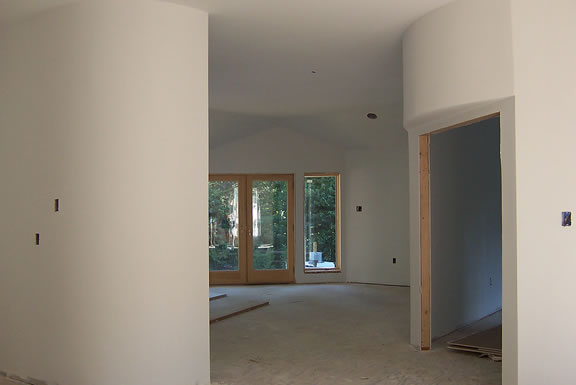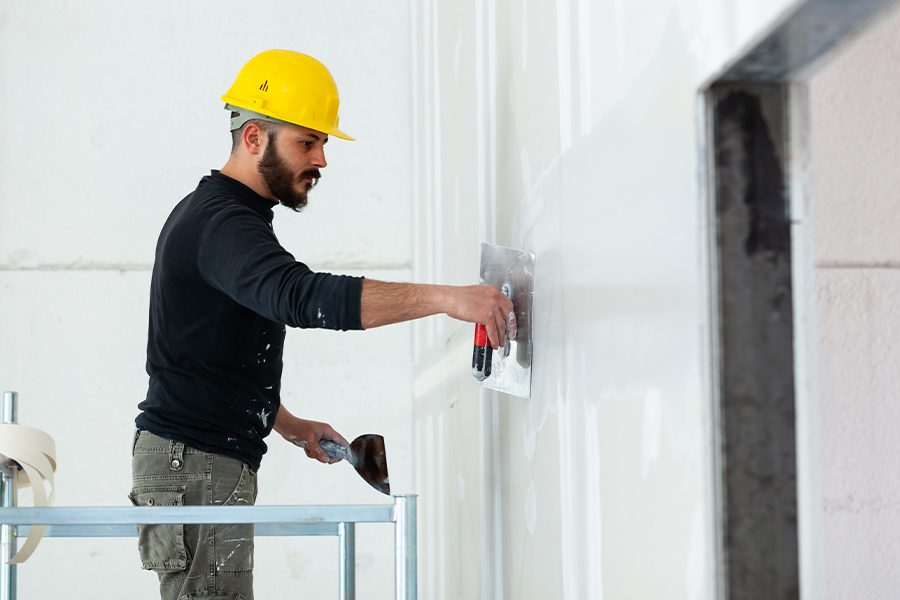Drywall Setup Made Easy: Tips for Perfect Results
Drywall installment is commonly viewed as a complicated job, yet with the right approach and understanding, it can come to be a workable venture. Understanding methods for cutting, hanging, and completing drywall can significantly impact the outcome.
Choosing the Right Materials
Picking the proper products for drywall installation is important to attaining a durable and cosmetically pleasing finish. drywall repair. The key component, drywall sheets, generally come in numerous densities, with 1/2-inch sheets being standard for indoor wall surfaces. For areas calling for added wetness resistance, such as kitchens or shower rooms, consider utilizing eco-friendly board or cement board, which are specially designed to withstand moisture

In addition, picking the ideal fasteners-- either nails or screws-- is crucial for protecting the drywall to the framing. Drywall screws are normally favored for their holding power and decreased risk of standing out. Last but not least, consider the complements such as primer and paint, which not only enhance the appearance but also secure the drywall from dampness and wear.
Preparing the Installation Location
Before beginning the drywall setup process, it is crucial to prepare the setup area completely. A clean office lessens the danger of damages to existing items and enables for reliable activity during setup.
Next, examine the walls and ceiling for any imperfections, such as splits, holes, or mold. Address these issues beforehand; spot any damages and allow sufficient time for fixings to dry. In addition, make certain that electric outlets, switches, and plumbing are correctly placed and represented, as this will affect drywall positioning.
Take into consideration the environmental conditions. A steady temperature level and moisture level are vital for optimal bond and performance of the drywall materials. If needed, use a dehumidifier or heating system to develop ideal problems.
Trimming and Hanging Drywall
The secret to effective drywall installment depends on the accurate cutting and dangling of the panels. Begin by measuring the room precisely, considering any kind of obstructions such as electric outlets or home windows. Utilize a straight edge and an energy blade to score the drywall along your dimensions, then snap it along the scored line for a clean break. For even more detailed cuts, such as around electrical outlets, a drywall saw can be used for accuracy.

Always work from the top down and delegated right, ensuring that you maintain a staggered pattern to improve security. Appropriately hanging the drywall sets the structure for a smooth finish, ultimately causing premium outcomes additional reading in your drywall project.
Taping and Mudding Methods
While proper cutting and dangling of drywall establishes the stage, the following critical step involves grasping taping and mudding techniques to make sure a smooth coating. Insulation is essential for reinforcing joints and avoiding splits; it entails embedding tape into the used joint compound (mud) Begin with a quality fiberglass or paper tape, applying the tape over the joint and pushing it into the damp mud making use of a taping blade, guaranteeing no air bubbles stay.
When the tape remains in area, apply a slim layer of joint substance over the tape, feathering the edges to create a smooth change to the drywall surface. Allow this layer to dry totally prior to sanding it lightly to get rid of flaws. Repeat this procedure, applying additional layers of mud as needed-- typically a couple of coats-- while slowly broadening the application area with each layer to accomplish a smooth appearance.
After the final layer dries, sand the surface area with site link a fine-grit sandpaper up until smooth. drywall installation. Keep in mind to use a mask throughout sanding to prevent breathing in dirt bits. Grasping these taping and mudding techniques is critical for achieving a professional-quality surface in your drywall setup
Completing Touches for Perfection
Attaining a remarkable drywall installation exceeds taping and mudding; it finishes in the finishing touches that elevate the general appearance. These last steps are vital in making sure a professional-grade finish that improves the looks of your room.
Begin by sanding the dried out joint substance to create a smooth surface. drywall installation. After sanding, wipe down the wall surfaces with a wet cloth to remove any kind of dirt particles, guaranteeing a clean surface area for paint.
Following, use a primer especially designed for drywall. This action is important, as it assists secure the joint compound and offers a consistent base for the topcoat. As soon as the primer dries out, inspect for any kind of blemishes, and touch up as needed.
Final Thought
In conclusion, effective drywall installment pivots on the cautious option of products, extensive preparation of the installation area, and precise execution of reducing and hanging methods. Proficiency of taping and mudding processes is essential for attaining a smooth finish.
Drywall setup is commonly regarded as a complicated task, yet with the right approach and expertise, it can end up being a manageable my website venture.Choosing the ideal products for drywall installation is crucial to attaining a durable and aesthetically pleasing surface.Before beginning the drywall installment process, it is vital to prepare the installment area completely. Understanding these taping and mudding techniques is critical for accomplishing a professional-quality finish in your drywall installment.
In final thought, successful drywall installment hinges on the cautious selection of materials, comprehensive prep work of the setup area, and specific implementation of reducing and hanging strategies.